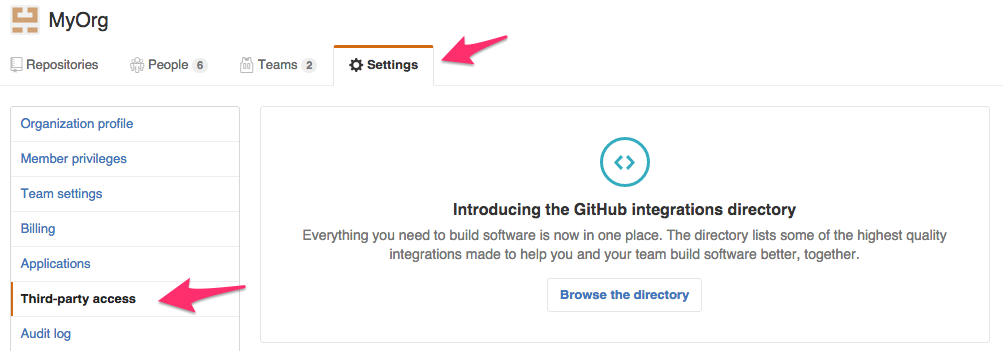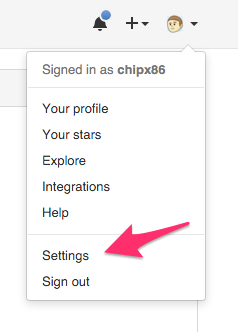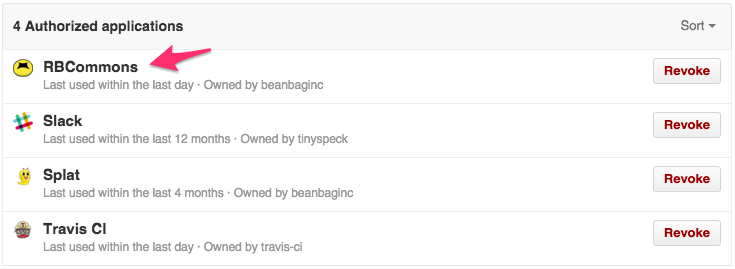GitHub Repositories¶
Review Board supports posting and reviewing code on GitHub repositories, using public or private personal repositories or organization-owned repositories.
Existing commits in a repository can be browsed and put up for review. Pull requests, however, are not currently supported (though planned for a future release).
To simplify posting changes to Review Board, we recommend using RBTools. This ensures that the diffs are in the correct format, and makes managing review requests much easier. See Using RBTools with Git for more information.
Adding the Repository¶
To configure a GitHub repository, first proceed to add the repository and select GitHub from the Hosting type field.
Step 1: Link Your GitHub Account¶
You will need to link an account on GitHub to Review Board, so that Review Board can access content from the repository. If you’ve already linked an account with sufficient access to the repository, you can use that instead.
If you’re linking for the first time, you’ll need to make sure you have your username and Personal Access Token handy.
Linking requirements changed in Review Board 3.0.18
Older versions accepted a standard GitHub account password, which would be used to automatically create an access token on your behalf. Since this capability is deprecated in GitHub, Review Board 3.0.18 and higher require that you create this token yourself. You’ll be guided through this below.
If you are running an older version and cannot link an account, you will need to upgrade Review Board.
Fill out the following fields:
- GitHub Username:
The username used to log into your GitHub account. This is not your e-mail address.
- Personal Access Token:
A GitHub Personal Access Token, created in your GitHub account under Settings -> Developer Settings -> Personal Access Tokens. When creating a new token, give it a descriptive name and enable the following scopes:
admin:repo_hookrepouser
The account will be linked when the repository is saved. If there are errors authenticating the user or retrieving an access token, you will be prompted to fix them.
Step 2: Provide Repository Information¶
Next, you’ll need to fill out the following fields:
- Repository plan:
This specifies the type of the repository, whether it’s public/private or personal/team. You’ll have one of the following choices:
Public: The repository is owned by the linked user account, and is publicly-accessible to any user.
Public Organization: The repository is owned by an organization, and is publicly accessible to any user.
Private: The repository is owned by the linked user account, and is accessible only to the linked user and other GitHub users who were granted permission.
Private Organization: The repository is owned by an organization, and is accessible only to the linked user and other GitHub users who were granted permission.
Note
The public/private options have no bearing on who can access review requests on this repository in Review Board. See Step 4: Manage Access Control.
- Organization name:
If you’re using an organization-based plan, you will need to specify the organization name in the Organization name field. This is the same value you would find in the URL. For example, if your repository was
https://github.com/myorg/myrepo/, your organization name would bemyorg.- Repository name:
You’ll then need to specify the name of your repository in the Repository name field. This is the same value you would find in the URL. In the above example, your repository name would be
myrepo.
Step 3: Choose a Bug Tracker¶
If you’re using the issue tracking feature on this repository, you can simply check the Use hosting service’s bug tracker checkbox. All bug IDs will link to the appropriate issues for your repository.
If you’re using a separate bug tracker, or a separate repository on GitHub, you can leave the checkbox unchecked and choose a bug tracker from the list.
Step 4: Manage Access Control¶
You can now choose who should have access to this repository (both posting against it and viewing review requests posted against it). This is separate from GitHub’s own access controls.
Step 5: Save the Repository¶
At this point, you should be able to save the repository. If saving succeeds, you’re done! You can start posting changes for review.
Note
You may see an error that the repository could not be found. This can happen if your GitHub organization requires access to be granted per-app, which is the default for modern organizations.
See Granting Organization Access to fix this, and then save the repository again.
Configuring Repository Hooks¶
Review Board can close review requests automatically when pushing commits to GitHub. This is done by configuring a WebHook and pointing it to your Review Board server, and then referencing the review request in your commit message (which is done for you when using rbt land).
Let’s go over how to set this up.
Note
Your Review Board server will need to be accessible over the Internet for this to work. GitHub will be performing HTTP/HTTPS requests to your server to notify Review Board of new commits.
Add the WebHook¶
On Review Board, view the list of repositories and locate the repository you want to configure hooks for. Beside the repository name, you’ll see a Hooks link. Click that and you’ll see instructions for configuring the hook.

The instructions will contain a link taking you to the page on GitHub for adding a new WebHook, along with all the information you need in order to add the hook. Simply follow the instructions and you’ll be ready to go.
Tag Your Commit Messages¶
To close a review request for a given commit, you’ll need to add some special
text to your commit message that references the review request. This can be in
the form of Reviewed at review_request_url or Review request
#id. This must be on its own line, but can appear anywhere in the commit
message.
For example:
Reviewed at https://reviewboard.example.com/r/123/
Or:
Review request #123
If you use rbt land, this will be automatically added for you when landing your changes.
Granting Organization Access¶
In order to keep your code secure, GitHub organizations are often set to require access explicitly granted by an organization administrator. This is the case by default with newer organizations, and many older ones have this on as well.
If you’ve tried to link one of your GitHub organization’s repositories and received an error message stating that the repository could not be found, it may simply mean that the server doesn’t yet have the permission to access it.
In this guide, we’ll help grant access.
Step 1: Verify Your Access Settings¶
You’ll need to check whether your organization restricts new third-party applications.
Have a GitHub organization administrator navigate to your organization page
(https://gthub.com/orgname) using their admin account. Click
Settings and then click Third-party access on the
left.

From here, you’ll be able to see the current access policy and any approved applications.
If Policy says Access restricted, then continue on with this guide.
However, if it says No restrictions, then you don’t need to worry about this guide, and should double-check the information you entered into the repository form instead (if it gave you an error about not being able to find your repository).

Keep this page handy. You’ll need to come back to it.
Step 2: Request or Grant Access¶
Make sure you’re logged in as the user whose account was linked to Review Board when configuring the repository. Go to your settings page (click your avatar in the top-right of any page on GitHub, and then click Settings). Then click Applications on the left.

“RBCommons” (or the name of your custom application) should appear in this list under Authorized Applications. Click on it.

From here, you’ll see a list of organizations you belong to that have access to your application, and any that need access to be granted. Your organization should appear in this list along with a button for requesting or granting access.
If you’re an organization admin…¶
Click Grant access from here. You’re done! Go back and save your repository again, and you should be all set up.

If you’re not an organization admin…¶
Click Request access and follow the instructions. You’ll then need to continue with step 3.

Step 3: Approve Requested Access¶
If you clicked Request access above, you’ll now need an organization admin to approve it (by clicking Grant Access above). The administrator from Step 1 should reload the page they were on in that step. RBCommons (or your custom application) should now be in the list. Simply approve the application from there, and you should be good to go.
Then, simply save the repository again. You’re done!
